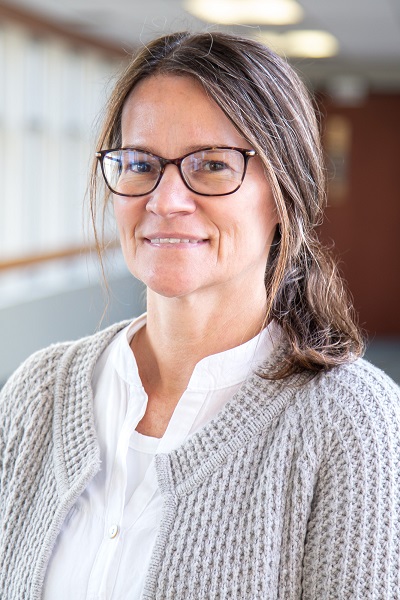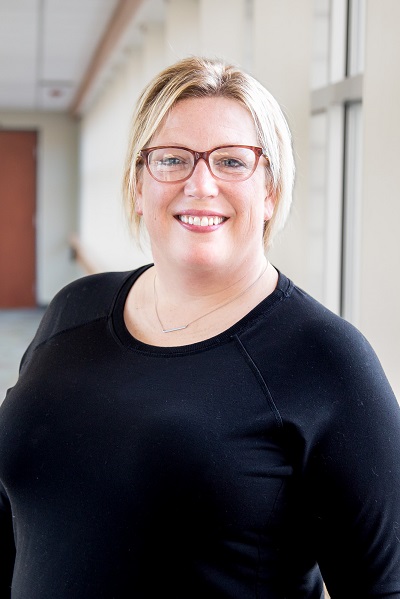How virtual sitter services saved St. Luke’s $1.5M in 2023

St. Luke’s serves the communities of northeastern Minnesota, northwestern Wisconsin and the Upper Peninsula of Michigan
Photo: St. Luke's
St. Luke’s is a Duluth, Minnesota-based health system that serves the communities of northeastern Minnesota, northwestern Wisconsin and the Upper Peninsula of Michigan. Like many health systems across the country, it has faced challenges with staffing: a tightening labor market, increasing competition for experienced healthcare workers and rising costs.
THE PROBLEM
"Many of these challenges were exacerbated by the COVID-19 pandemic, prompting us to seek new ways to provide additional resources and support to our patient care staff," said Cole Rogers, RN, nurse manager at St. Luke's.
"We identified virtual sitting as one solution to achieve a quick ROI, enabling us to decrease the use of costly one-to-one sitters."
PROPOSAL
Knowing it couldn’t simply keep hiring more one-to-one sitters, St. Luke's decided to explore alternative means of preventing patient falls and keeping patients safe.
"One method proven through research to be effective is virtual sitting, which enables a single, trained employee to monitor multiple patients simultaneously via AI-enabled mobile video-and-audio connection," said Kristin Townley, RN, clinical supervisor at St. Luke's. "This method helps prevent falls, elopement, violence against caregivers and other adverse events.
"Virtual monitoring has allowed our patient care teams to become more efficient by reserving their time for skills, activities and clinical tasks appropriate to their experience, education and licensure."
Cole Rogers, RN, St. Luke's
"Implementing a virtual sitter program promised to optimize staff efficiencies by allocating our resources more effectively – thereby, reducing the burden on staff and allowing them to focus on other critical aspects of patient care, while the virtual sitter program handles routine observation tasks," she continued.
After a competitive review of vendors, St. Luke’s decided to go with AvaSure. Staff had spoken with nursing leaders at peer institutions and learned of the vendor's excellent customer service, quick implementation and continued program support post-launch, she added.
"In addition, we appreciated the two-way video and versatile configurations of room devices, which enable a wide range of virtual care advances," she noted.
MEETING THE CHALLENGE
St. Luke's nurse-driven elevated level of observation protocol allows the primary RN to initiate the virtual sitting program in their Meditech Expanse EHR. Once the order is placed, the monitor specialists receive a notification via their ASCOM phone system.
"We use a two-person model for our virtual sitting program: one staff member provides rounding services for patients and staff, while the other observes patients via video monitors," Townley explained. "Nursing leaders have found this approach enhances patient and staff safety and helps support staff by providing adequate breaks to avoid monitor fatigue.
"Promoting a team approach to safety has helped build trust and goodwill among departments which, in turn, has increased program utilization."
Kristin Townley, RN, St. Luke's
"Promoting a team approach to safety has helped build trust and goodwill among departments which, in turn, has increased program utilization," she continued.
By adding a rounding specialist, the hospital has provided nursing staff with a valuable resource for patient safety, which allows them to concentrate on direct patient care needs. Here’s how the process works.
Once an order is received, one specialist transports the camera to the patient room, completes audio and visual checks, and introduces the monitor observer to the patient. During rounds, the rounding specialist obtains face-to-face reports from nursing staff, provides patient updates, and rounds on one-to-one patients and staff while ensuring their welfare and conducting room safety checks.
Additionally, the specialist facilitates the triage process, attends staffing huddles, and cleans and transports camera and audio devices to storage. Finally, the monitor observer and rounding specialist switch places at least every four hours, depending on patient acuity, to avoid monitor fatigue.
"In addition to using virtual sitting for patients at risk of falls and elopement, St. Luke’s Hospital has expanded to virtual sitting for monitoring vital signs, monitoring seizure patients, communicating with patients requiring frequent interactions, and connecting with patients who have high call light usage," Townley said.
"Our monitor specialists are currently being trained in empathetic communication, by our mental health department, in order to provide additional support to patients experiencing anxiety, depression and other mental health issues," she added.
RESULTS
Since initiating the virtual sitting program at St. Luke’s Hospital in November 2021, the organization has had more than 164,842 hours of patient observation. The program uses 16 devices throughout the hospital. Virtual monitoring of patients has improved patient safety through fall reduction and prevention, boosted staff efficiency, and decreased staffing costs by reducing one-to-one sitters.
"Our primary use of virtual sitting is for fall reduction and prevention," explained Cole Rogers, RN, nurse manager at St. Luke's. "Fifty-four percent of our patients are admitted to the program for heightened fall risk. We estimate our program prevents 529 falls per month at St. Luke’s. We believe our virtual monitoring program helped us achieve the lowest fall rate in the State of Minnesota for the 3rd quarter of 2023.
"Without the presence of video and audio, the story could have ended differently and perhaps tragically."
Christine Glover, St. Luke's
"Virtual monitoring has allowed our patient care teams to become more efficient by reserving their time for skills, activities and clinical tasks appropriate to their experience, education and licensure, thus relieving them of duties that could be safely done by someone else with an alternative skill set," she continued. "To optimize nursing licensure, we have implemented innovative methods of deploying our virtual sitter technology."
One example is using monitor staff to check in with patients receiving continuous bladder irrigation, instead of the nurse being required to check in with the patient every 15-20 minutes. Another example is using the virtual monitor assistant to encourage patients to drink their bowel prep solution every 15 minutes, again preventing a nurse from having to do this task.
"The cost-effectiveness of our virtual sitter technology compared to traditional methods of one-to-one sitters has been incredibly impactful to St. Luke’s Hospital," Rogers said. "In 2023, virtual sitter hours accounted for 39.7 FTEs hospital wide, while staffed one-to-one sitters amounted to 8.8 FTEs. For 2023, the annual cost savings from our virtual sitting program is more than $1.5 million dollars.
"From 2022-2023, some units in St. Luke’s Hospital saw a decrease in the number of one-to-one sitters by 73% due to the utilization of the virtual sitter program," she continued. "Looking back to 2018, prior to implementing the virtual sitter program, St. Luke’s Hospital averaged 15.9 FTEs of one-to-one sitters."
Since 2018, the organization has decreased one-to-one sitter FTE by about half, which allows those staff members to return to providing bedside care on the unit in addition to adding the support of the virtual sitter program. Virtual sitting has improved staffing ratios from one-to-one to one-to-12, sometimes even as high as one-to-16, depending on patient acuity.
"We believe communicating the positive impact of a virtual sitter program to patients and their families gives us greater engagement," she noted. "A successful virtual sitter program fosters transparent communication between healthcare providers, patients and their families. It reassures them their well-being is a top priority, promoting a sense of trust in the health system."
ADVICE FOR OTHERS
Christine Glover, telemonitor specialist program coordinator at St. Luke's, advises her peers at other hospitals and health systems starting a virtual sitter program to consider prioritizing three steps: systematic training, patient-centered approach and continuous evaluation.
"Comprehensive training and education for healthcare staff and virtual sitters is integral to a successful program," she said. "Thorough orientation ensures virtual sitters receive training in both technological aspects and healthcare protocols to guarantee competent and compassionate care.
"A patient-centered approach enables virtual sitters to prioritize patients’ well-being: providing emotional support, and maintaining a compassionate connection despite the virtual nature of the services we provide," she continued. "Regularly assessing and appropriately triaging patients under observation allows the acute patients to remain monitored and the stable patients to discharge from the program, optimizing the technologic-assisted care."
This ensures feedback from both virtual sitters and healthcare staff to identify areas for determining appropriate interventions and implementing necessary adjustments, she added. Providing training to St. Luke's bedside care staff led to better patient outcomes and overall staff satisfaction, she reported.
From a technological viewpoint, Glover outlined, these are the pieces that flow together to enhance communication electronically:
-
Order entry for virtual monitoring in the patient’s electronic healthcare record transmits to the ASCOM phone in the monitor department.
-
A monitor specialist enters patient information into program software.
-
The camera video/audio monitoring is initiated and tested. The mobile cameras are equipped with infrared technology for night vision.
-
Frequent communication from the monitor specialist to primary care staff occurs via ASCOM phones.
-
Communication with patients happens via verbal interventions, prerecorded announcements and stat alarms.
-
To ensure monitor staff attentiveness, observer alert notifications are transmitted to leadership over ASCOM phones to check staff and patients for safety.
-
Data on the number of safety events, device and unit utilization, alarm response times, and the number of interventions are collected by a software informatics program. This information is globally distributed throughout St. Luke’s Hospital.
-
Open shifts within the department are texted out via computer software.
"Feedback we’ve received about our virtual monitoring program includes mention of the ease of implementation for nursing staff," Glover noted. "It’s been said the two-person virtual monitoring model we use for our program produces less stressful ordering and higher utilization, which results in increased patient safety.
"A nurse can enter an order for virtual monitoring at any workstation, removing the need for paper forms and faxing," she continued. "The delivery of the camera to the unit by the rounding staff allows the nurse to remain on the unit to provide patient care."
One patient story illustrates the benefit the virtual sitting program has created for patient safety.
"While observing a patient in the neurology unit for fall prevention, the virtual sitter noticed the patient begin to cough while the patient was eating lunch," she recalled. "The virtual safety attendant activated the audio on the patient’s camera and heard coughing and gasping. He then called the on-duty nurse to intervene and called a rapid response code.
"The nurse stopped the patient from choking, and the patient was later moved to an area of the hospital that delivered a higher level of care," she continued. "Without the presence of video and audio, the story could have ended differently and perhaps tragically."
The integration of virtual sitter technology represents a significant step toward enhancing patient care and streamlining healthcare operations, she added.
"By considering these key factors, healthcare providers can make informed decisions that contribute to a safer, more efficient and patient-centric healthcare environment," she concluded.
Follow Bill's HIT coverage on LinkedIn: Bill Siwicki
Email him: bsiwicki@himss.org
Healthcare IT News is a HIMSS Media publication.



























